Last Updated on August 26, 2024 by Dee
Welcome to our guide on Zentangle inspired patterns, where we offer a variety of drawing ideas to inspire your Zentangle creations. Zentangle is a relaxing and creative art form that involves drawing repetitive patterns to form beautiful, intricate designs.
In this post, we’ll present a range of Zentangle inspired patterns, from simple and easy-to-follow to more complex and detailed designs. Whether you’re new to Zentangle or looking to expand your repertoire, these ideas will provide you with plenty of inspiration to enhance your Zentangle inspired drawings. Let’s dive in and explore the endless possibilities of Zentangle inspired art!
A word about Zentangle® : It is a technique invented by Rick Roberts and Maria Thomas; please click here to see the official Zentangle site to read and learn more about it.
41+ Zentangle Inspired Pattern Ideas
Here is a collection of Zentangle inspired pattern ideas for beginners and for more advanced tanglers. You can copy these or use them as inspiration in your own Zentangle inspired artwork!







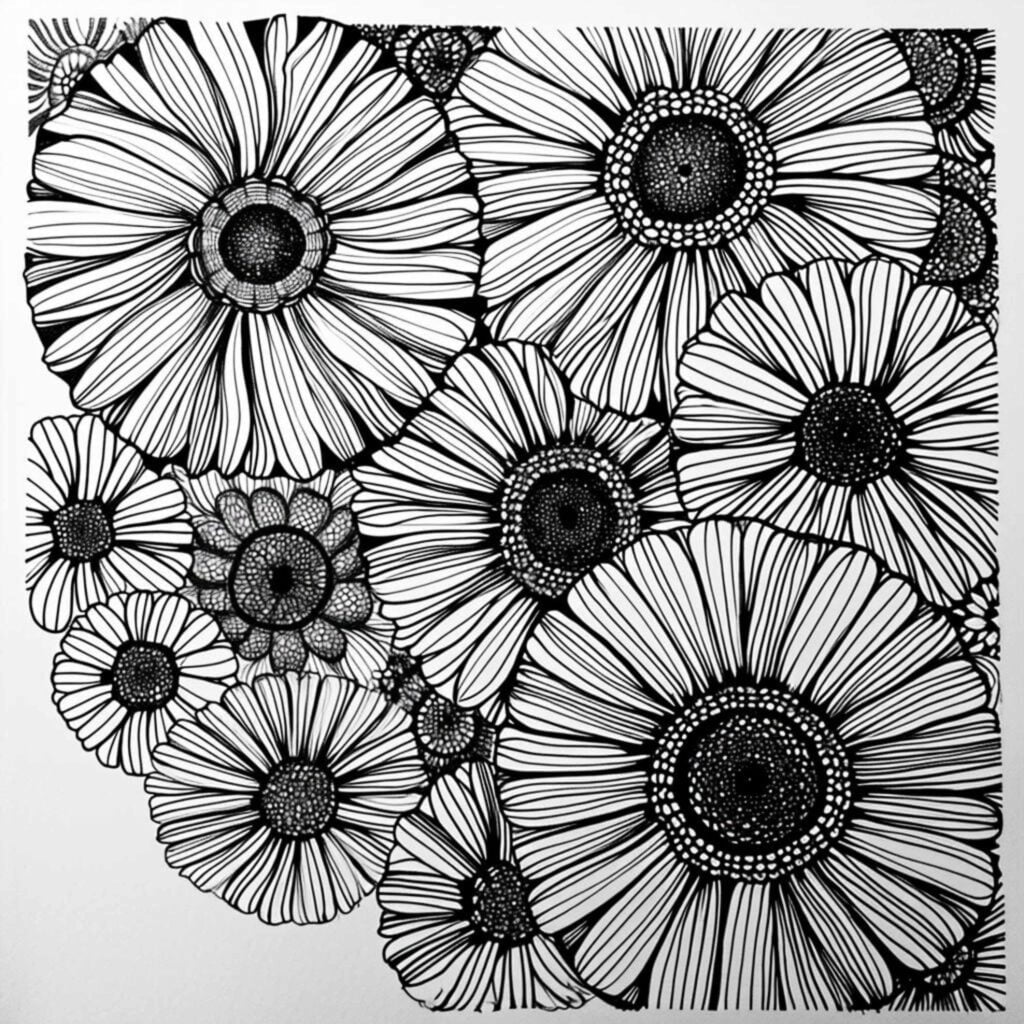

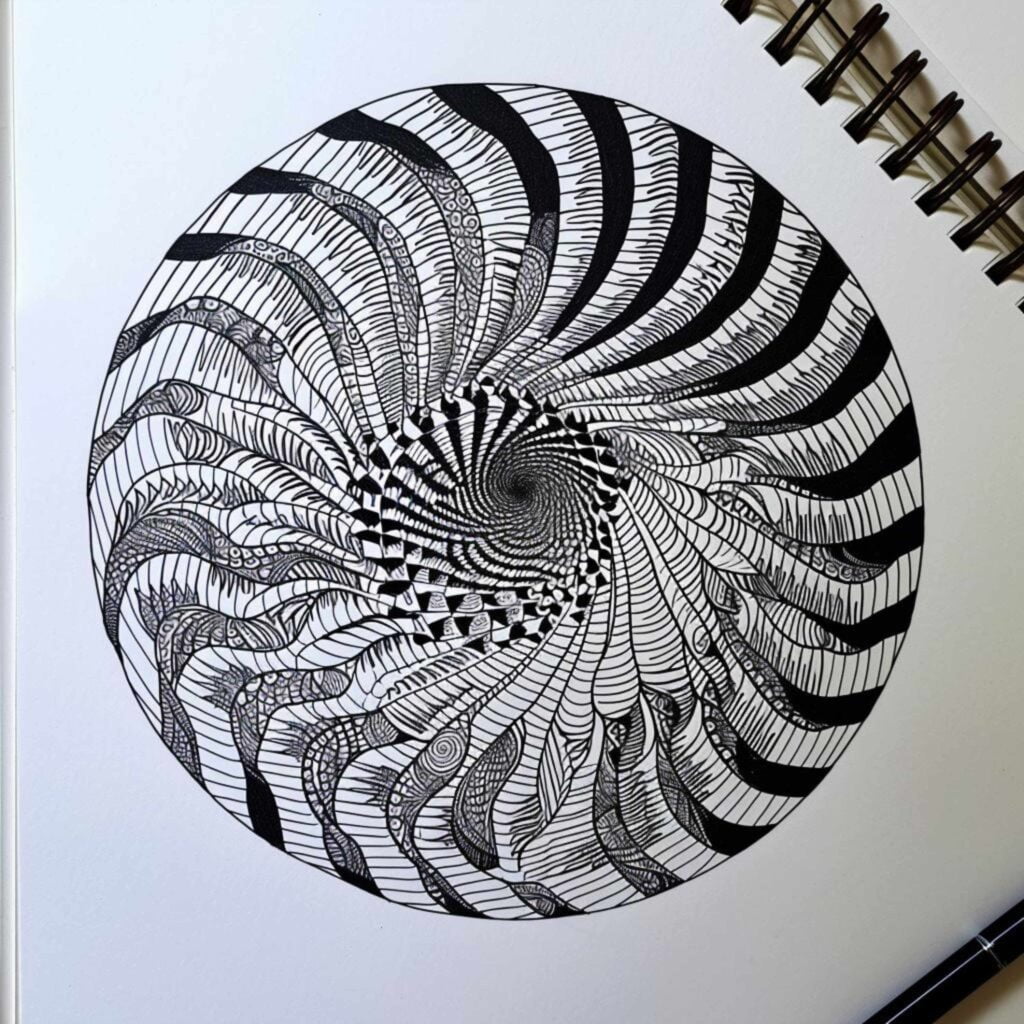














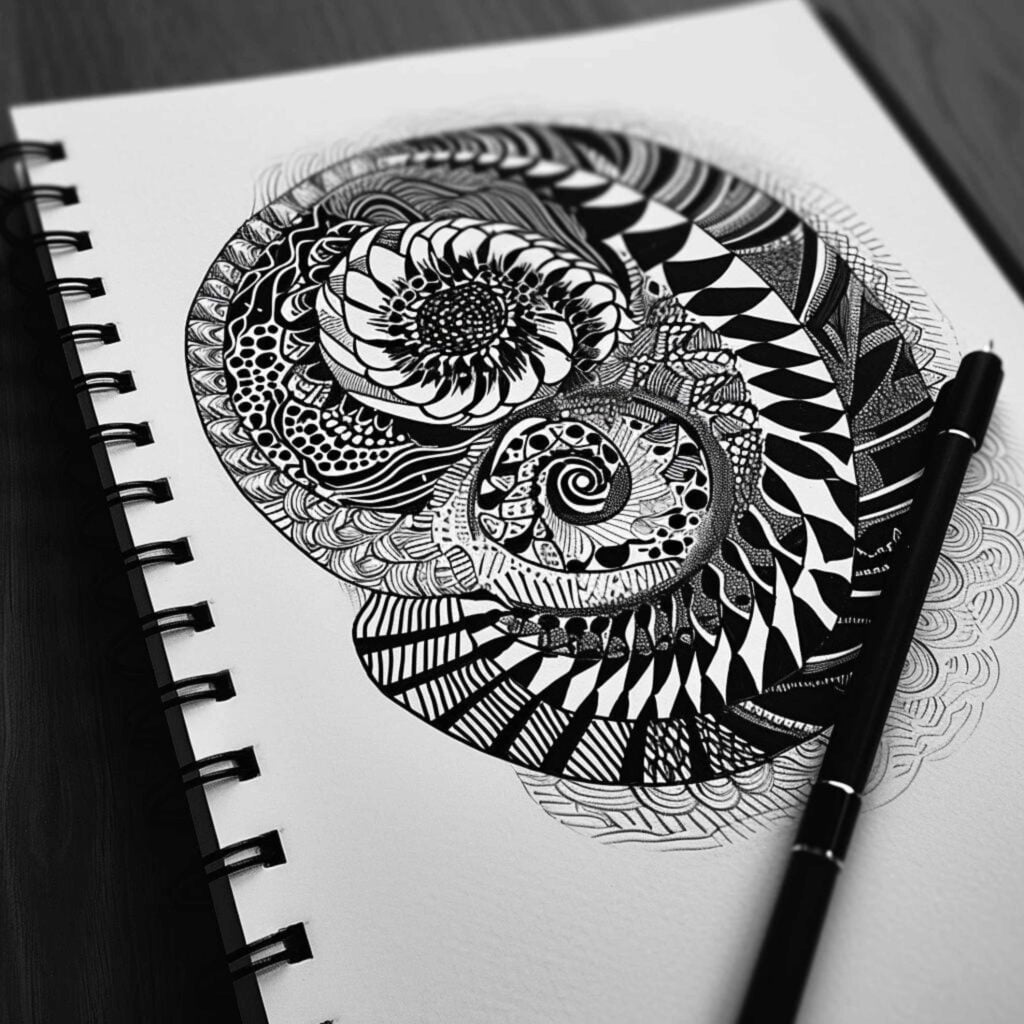













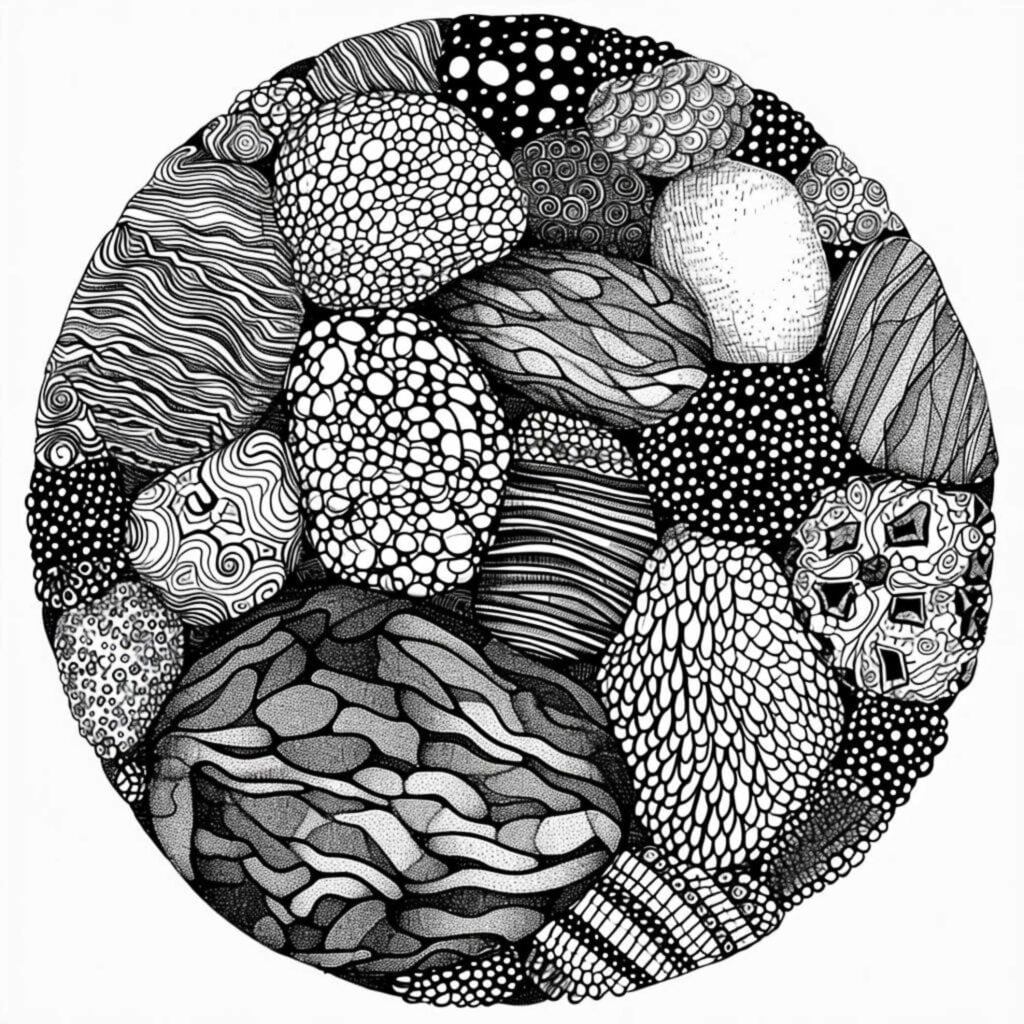






Understanding Zentangle
If you’re new to the world of Zentangle, you may be wondering what it’s all about. Zentangle is an art form that combines creativity and meditation to help you focus and relax. In this section, we’ll explore the Zentangle method and the benefits it can bring to your life.
The Zentangle Method
The Zentangle method was created by Rick Roberts and Maria Thomas in 2004 as a way to help people relax and focus. It involves drawing simple, repetitive patterns on a small piece of paper called a “tile.” The Zentangle method is based on eight steps that guide you through the process of creating a Zentangle:
- Gratitude
- Breath
- Border
- String
- Tangles
- Shade
- Sign
- Appreciation
By following these steps, you can create a beautiful piece of art while also calming your mind and reducing stress.
Benefits of Zentangle
There are many benefits to practicing Zentangle. Here are just a few:
- Relaxation: Creating a Zentangle can be a meditative experience that helps you relax and reduce stress.
- Focus: The repetitive nature of the Zentangle method can help you focus and improve your concentration.
- Creativity: Zentangle is a great way to express your creativity and explore new ideas.
- Meditation: Zentangle can be a form of meditation that helps you quiet your mind and find inner peace.
Overall, Zentangle is a wonderful way to combine art and meditation to help you relax, focus, and express your creativity. Whether you’re a seasoned artist or a beginner, the Zentangle method can help you discover new ways to explore your inner world.
Exploring Zentangle Inspired Patterns
If you’re new to Zentangle art, you may be wondering what patterns to use in your drawings. There are many different types of patterns to choose from, ranging from structured to organic and free-flowing. In this section, we’ll explore some of the most popular types of Zentangle inspired patterns and how to use them in your art.
Structured Patterns
Structured patterns are made up of repeated geometric shapes and lines. These patterns are great for beginners because they are easy to draw and can be used to create intricate designs. Some popular structured patterns include “Hollibaugh,” “Crescent Moon,” and “Paradox.”
To draw a structured pattern, start by drawing a basic shape or line. Then, repeat that shape or line to create a pattern. You can vary the size and spacing of the shapes or lines to create different effects. For example, you can create a checkerboard pattern by alternating squares and rectangles of different sizes.
Organic and Free-Flowing Patterns
Organic and free-flowing patterns are curvy and fluid, and often resemble natural forms like flowers, leaves, and waves. These patterns are great for adding movement and energy to your Zentangle inspired art. Some popular organic and free-flowing patterns include “Florz,” “Bales,” and “Fescu.”
To draw an organic or free-flowing pattern, start by drawing a curvy line or shape. Then, add more lines or shapes to create a flowing pattern. You can vary the size and shape of the lines or shapes to create different effects. For example, you can create a vine pattern by drawing curvy lines with leaves branching off.
Borders and Corners
Borders and corners are patterns that are used to frame your Zentangle inspired art. These patterns often include dots, squares, triangles, and other shapes. Some popular border and corner patterns include “Hollis,” “Mooka,” and “Betweed.”
To draw a border or corner pattern, start by drawing a line or shape around the edge of your paper. Then, add more lines or shapes to create a pattern. You can vary the size and spacing of the lines or shapes to create different effects. For example, you can create a corner pattern by drawing a square with dots in the corners.
In conclusion, there are many different types of Zentangle inspired patterns to choose from, ranging from structured to organic and free-flowing. By experimenting with different patterns and techniques, you can create unique and beautiful Zentangle inspired art.
Getting Started with Zentangle Inspired Art
If you’re new to Zentangle, you might be wondering where to start. Don’t worry, it’s easy! Here are some basic supplies you’ll need to get started, as well as some simple patterns to try.
**This page may contain affiliate links to products I have used or recommend. If you purchase something from this page, I may receive a small percentage of the sale at no extra cost to you.**
Basic Supplies
To start, you’ll need a few supplies. The good news is, you don’t need much! Here’s what you’ll need:
- A pencil
- A pen with a fine tip
- A 3.5″ square piece of paper (called a “tile”)
- An eraser (optional)
That’s it! You can buy special Zentangle pens, but any pen with a fine tip will work. You’ll also want to use good quality paper, such as printmaking paper, which is plain white and unlined.
Your First Zentangle Inspired Tile
To begin, draw a border around the edge of your tile. This will help you keep your design contained. Next, draw a “string” in the middle of your tile. A string is simply a line or curve that will guide your pattern. You can make it any shape you like.
Now it’s time to start tangling! Choose a simple pattern to fill in one of the spaces created by your string. There are many easy Zentangle inspired patterns to choose from, such as dots, circles, and spirals. Fill in the space with your chosen pattern, then move on to the next space. Repeat until your tile is complete.
Simple Patterns to Begin With
If you’re looking for some easy patterns to get started with, here are a few ideas:
- Square: Divide your tile into four equal sections with two lines. Fill each section with a different pattern.
- Crescent Moon: Draw a half-moon shape, then fill it in with a repeating pattern.
- Hollibaugh: Draw a series of curved lines, then fill in the spaces with a simple pattern.
Remember, the beauty of this drawing technique is that there are no mistakes! If you don’t like a pattern, simply move on to the next one. And don’t forget to add shading to your finished tile to give it depth and dimension.
Now that you know the basics, you’re ready to start creating your own Zentangle inspired patterns. Have fun and happy tangling!
Advanced Techniques
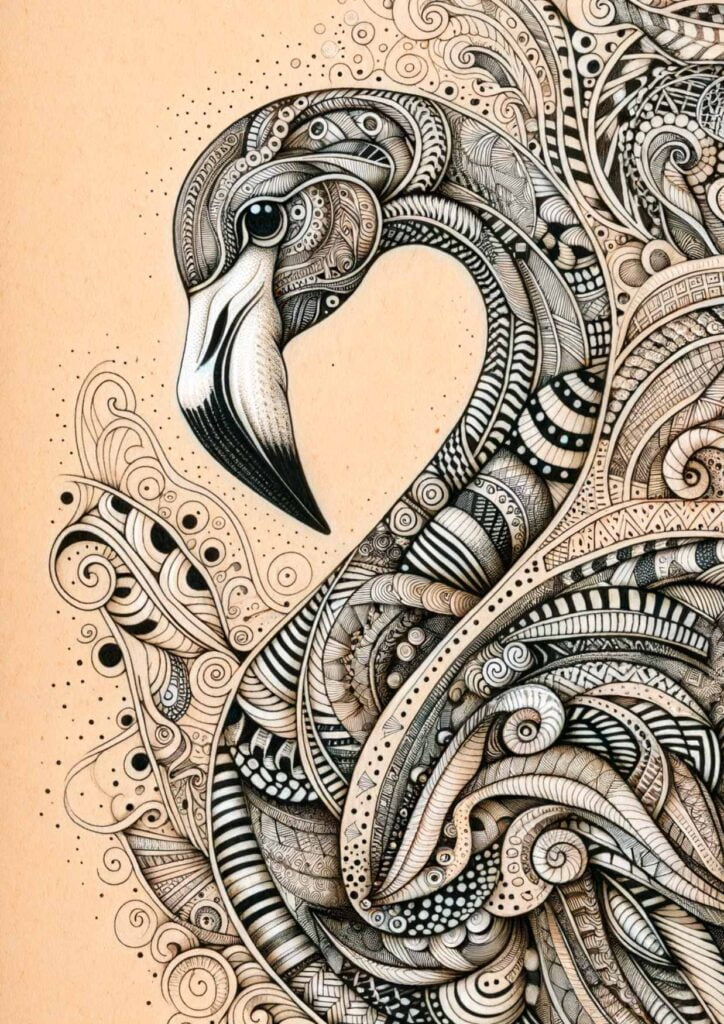
If you’ve mastered the basics of simple patterns, you may be ready to move on to more advanced techniques. Here are a few ideas to take your Zentangle inspired art to the next level.
Shading and Textures
Shading is an essential technique in Zentangle inspired art that adds depth and dimension to your work. By using light and shadow, you can create the illusion of different textures and surfaces. For example, you can use shading to make a pattern look like it’s popping off the page or to give the impression of a woven texture.
To shade your Zentangle inspired patterns, start by identifying the light source in your drawing. Then, use a pencil or pen to add shading to the areas that would be in shadow. You can also experiment with different shading techniques, such as cross-hatching or stippling, to create different effects.
Combining Patterns Creatively
One of the joys of this type of art is that the endless possibilities for combining patterns creatively. Instead of sticking to a single pattern, try combining different tangles to create a unique design. You can also experiment with different shapes and sizes to create a more dynamic composition.
When combining patterns, it’s important to consider the contrast between different tangles. For example, you might pair a bold, geometric pattern with a more organic, flowing pattern to create a visually interesting contrast.
Creating Zentangle-Inspired Art
Zentangle inspired art doesn’t have to be limited to patterns on a page. You can also use these techniques to create larger pieces of art, such as paintings or sculptures. This can be a great way to explore your creativity and experiment with different materials and techniques.
To create Zentangle-inspired art, start by brainstorming different ideas for your piece. You might use a particular pattern as a starting point or draw inspiration from a particular theme or concept. Then, experiment with different materials and techniques to bring your vision to life.
By incorporating shading, combining patterns creatively, and exploring other art forms, you can take your patterns to the next level. With a little practice and experimentation, you can create beautiful, intricate works of art that showcase your creativity and skill.
Zentangle Inspired Art for Everyone
Zentangle is a form of art that anyone can enjoy, regardless of age or skill level. It is a relaxing and meditative art form that can be used for therapeutic purposes, education, or simply as a way to unwind and de-stress.
Zentangle Inspired Art for Kids

Zentangle inspired drawing is a great activity for kids, as it helps to improve their focus and concentration, as well as their creativity and imagination. These patterns are easy to create and can be adapted to suit any age or skill level. Kids can use them to create their own unique designs, or they can follow step-by-step instructions to create more complex patterns.
Therapeutic Zentangle Inspired Art
Doodle art has been used as a form of therapy for people with anxiety, depression, and other mental health issues. It is a mindful activity that can help to reduce stress and promote relaxation. It can also be used as a form of meditation, allowing individuals to focus their attention on the present moment and let go of negative thoughts and emotions.
Zentangle-Inspired Art in Education
This type of drawing can be used in schools as a way to promote creativity, learning, and relaxation. It can be used to teach students about patterns, shapes, and colors, as well as to help them develop their fine motor skills. Zentangle inspired art can also be used as a way to help students relax and de-stress, particularly during exam periods or other stressful times.
Other articles you may enjoy…
31 Zentangle Flowers For a Month Of Drawing Inspiration
29 Watercolor Backgrounds: A Palette of Painting Inspiration
38 FREE Butterfly Stencil Templates: Flutter Into Creativity!
Grab the Free Zentangle Inspired Coloring Pages HERE (below)!
To access the free in-post printables for this post, you’ll just need to create a free account or log in with the Grow.me tool. Then, confirm by email and refresh the page, and ALL my free printables will automatically unlock in every post!






Great way for me to get my art mind going again!!
Since we lost our home in Greenville, California DIXIE FIRE,
I LOST MY FIRE IN ME!!
I am so sorry to hear that!! Devastating I am sure 🙁 Thinking of you and happy art-making!
This has been great therapy since knee replacement! I have something to focus on other than pain. Of course, I will have to stand and take a step, but art is easier.
Ah man, a knee op is quite something! Hoping you make a swift recovery and the pain becomes a distant memory quickly!
Hi Artsy,
I hope you know we also use pencil in Zentangle(R) drawing? Pencil is used for the first steps (dots, border, string) and for shading (with a blending stump or tortillon).
I only see Zentangle Inspired work on your page. Will you please be sure to use the right names ?
creative tangle regards, ArjadLH, CZT9
Dear ArjadLH,
Thank you for reaching out and sharing your insight about the use of pencils in Zentangle® drawing. I appreciate you taking the time to clarify this aspect of the method. I’ll definitely make sure to be more mindful of the terminology I use in future posts to accurately reflect the official Zentangle® practice.
I am still learning about the beautiful art form of Zentangle and am always open to feedback and corrections from experienced practitioners like yourself.
Thank you again for your message and for helping me to improve my understanding.
Warm regards,
ArtsyDee